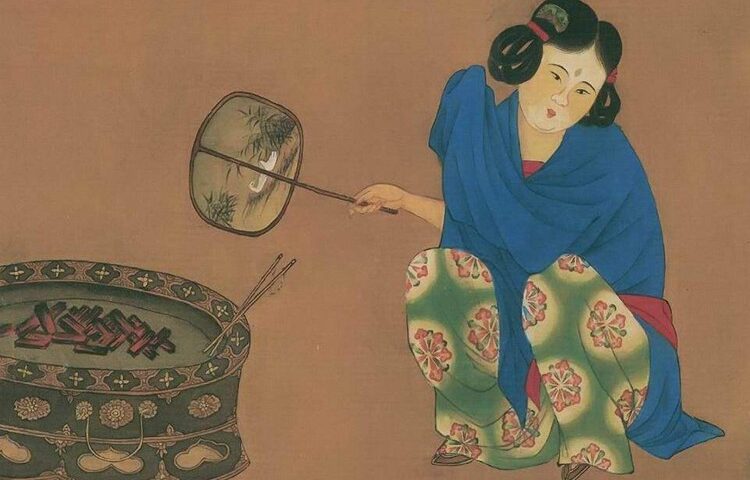The process of making pearls is an amazing example of the diversity and ingenuity of the nature. Learn how oysters make the pearls them and why they need them.
Natural and cultured pearls
The popularity of jewelry with pearls is very high – so much that natural resources are simply not enough. To meet the demand, synthetic and cultured pearls have been introduced to the pearl market.
Jewelry with natural pearls is still on sale, but their price is high: natural pearls grow slowly.

Who can produce the pearls?
Not all molusk and shellfish can produce pearls. The most oysters can. They can be freshwater and marine, and freshwater are more “productive”: in one shell there can be several balls at once. But sea pearls are larger.
Shape and size of the pearls
The shape of the future precious ball depends on where the external body gets into the shell.
If a grain of sand manages to get into the mantle of the mollusk, you can count on a ball of the correct shape. Pearls formed at the surface of the shell or in the muscles are irregular in shape.
There are examples of a button-like pearls, semicircular shapes and there are shapeless pearls.
How the pearls are formed?
Foreign substance or body, for example, a grain of sand or small insect, must enter the shell of a mollusk. The mollusk will instantly react to the “guest”: the inner surface of the shell is lined with the mantle of a mollusk with many sensitive nerve endings.
The body of the mollusk is tender, any stranger in the shell causes him inconvenience. The mollusk begins to secrete nacre, envelops a rough grain of sand and a miniature pearl grain with a smooth surface is obtained.
What is the largest spider in the world: the huge “birds-eater”
Over time, this pearl crumb can become a large pearl. The pearl is the result of the self-defense of the shellfish and oyster. The mollusk cannot get rid of the uninvited guest who entered the shell, so it begins to defend itself with the help of nacre.
Isolation of foreign substance is a reaction to a potential threat.

How pearls grow in a shell?
Gradually, the mollusk builds up a layer of nacre on the pearl, and it becomes larger. The growth rate depends on the type of shell and its age, habitat (fresh water or salty sea water), ecological situation.
For example, the “older” shells can form only small balls of nacre, as their mantle is depleted with age. Sea mollusks create the largest pearls – river pearls are half the size, but there may be several of them in one shell.
The color of a pearl depends on how the light was distributed during its growth. Natural pearls can be white and pink, blue and green, beige and gray, black.
How pearls are mined from shells?
Finding pearls is a real profession, some people devote their whole life to this craft. The search for pearl oysters is laborious and dangerous: divers have to dive to great depths in order to get shells from the seabed.

It is never possible to predict in advance which pearl in a shell is large or small, round or imperfect, and whether it is there at all.
The pearl oysters found are opened, and at this moment the growth of the pearl (if any) stops.
In 100 shells of molluscs, up to 10 pearls of good quality can be found, the rest, unfortunately, is waste.
Who invented the first car: 2 German Competitors
Pearls and ecological issues
The extraction of natural pearls is a strong blow to nature. Just imagine – you need to kill up to 100 creatures or even more to find 1 or 5 pearls.
Respect for nature and the marine ecosystem is one of the reasons why people choose cultured or cultured pearls.
How cultured pearls are formed In comparison with natural pearls?
The cultured pearls grow faster: river pearls can mature in 2 years, sea pearls – in 3 years.
Cultured pearls grow in real shells, in natural conditions, but with human help. Whole farms are created to grow oyesters.
To create cultured pearls, an implant is prepared – a small ball, which will serve as the basis for a future pearl. This implant is inserted into the mantle of a pearl mussel, and then the shells of mollusks in special nets are lowered into the reservoir.
The living mantle begins to secrete a pearlescent composition that gradually covers the implant. As a result, a pearl is formed with an ideal round shape.
When the time comes for the extraction of cultured pearls, the shells are taken out of the sea water. First, the pearls are drilled, then they can be dyed in different colors.
The quality of cultured pearls depends on how long they matured.
It is believed that good quality pearls are formed over a 2-year period
Modern craftsmen have learned how to grow pearls of a certain size, shape and even color.
Interesting facts about desert plants: the variety and survival
How artificial pearls are formed?
The shell of a mollusk does not participate in the formation of artificial (synthetic) pearls – created by man. There are many varieties of synthetic pearls: the core can be made of glass, plastic, alabaster, coral or natural shell of a mollusk.
At first glance it is very difficult to distinguish a natural pearl from a cultured or synthetic one of high quality – only a professional in this field can handle it.
Source: market.russam



